Welcome to the era of 5G networks, where speed and connectivity reach unprecedented levels. The 5G technology revolutionizes the telecommunications landscape, offering remarkable capabilities that surpass its predecessors. In this article, we will delve into the intricacies of 5G, exploring its key features, potential applications, and the profound impact it will have on various industries.
With 5G, a new era of connectivity emerges, transforming the way we communicate, collaborate, and innovate. This groundbreaking technology builds upon the foundation of 4G LTE networks, delivering faster data speeds, lower latency, and the ability to connect a vast number of devices simultaneously.
Enhanced mobile broadband (eMBB) enables seamless streaming, faster downloads, and an enhanced user experience. The ultra-reliable low-latency communications (URLLC) ensure near-instantaneous communication, redefining real-time responsiveness for applications such as online gaming, virtual reality (VR), and remote surgery.
Amidst the exponential growth of the Internet of Things (IoT) ecosystem, 5G becomes the pillar of massive machine-type communications (mMTC). It empowers a more interconnected world, where devices communicate seamlessly, revolutionizing smart cities, autonomous vehicles, and industrial automation.
The transformative capabilities of 5G extend beyond individual sectors. In healthcare, it revolutionizes remote patient care and telemedicine. In transportation, it enables faster decision-making and safer navigation for autonomous vehicles. In manufacturing, it powers advanced automation and predictive maintenance. Additionally, 5G enhances mobile experiences, making augmented reality (AR) and virtual reality (VR) more compelling.
However, as we embark on this new frontier, there are challenges and considerations that need navigating. Infrastructure requirements, regulatory hurdles, and cybersecurity concerns must be addressed to fully unlock the potential of 5G technology.
As 5G networks roll out globally, the possibilities for innovation and advancement are boundless. Connectivity catalyzes technological evolution, paving the way for a future that embraces unprecedented speed and connectivity.
Understanding 5G Technology: The Evolution of Connectivity
The advent of 5G technology marks a significant milestone in the evolution of connectivity. As the successor to 4G LTE networks, 5G offers a plethora of improvements that enhance data speeds, reduce latency, and enable seamless connectivity for a massive number of devices.
The key pillars that support the foundation of 5G technology are:
- Enhanced Mobile Broadband (eMBB): With 5G, users can experience blazing-fast data speeds that outperform their 4G counterparts. This translates into quicker downloads, smoother streaming, and an overall enhanced user experience. The technology facilitates seamless interactions with large multimedia files, enabling users to unlock the full potential of their devices.
- Ultra-Reliable Low-Latency Communications (URLLC): In the era of real-time communication and mission-critical applications, 5G technology takes a leap forward in minimizing latency. With lower latency rates, tasks that require near-instantaneous responsiveness, such as gaming, virtual reality, and remote surgery, can be executed without any noticeable delay. This level of responsiveness revolutionizes various industries and opens up new possibilities for innovation.
- Massive Machine-Type Communications (mMTC): The Internet of Things (IoT) is rapidly expanding, and 5G is designed to accommodate this exponential growth. With the ability to connect a vast number of devices simultaneously, 5G enables seamless machine-to-machine communication. This empowers industries such as smart cities, autonomous vehicles, and industrial automation, where devices need to exchange data seamlessly and efficiently.
The table below illustrates the comparative features of 5G technology:
| Feature | 4G LTE | 5G |
|---|---|---|
| Data Speeds | Up to 100 Mbps | Exceeds 10 Gbps |
| Latency | Typically 10-50 milliseconds | Near-instantaneous |
| Device Connectivity | Up to 1,000 devices per square kilometer | Up to 1 million devices per square kilometer |
| Use Cases | Mobile broadband, video streaming | Remote surgery, autonomous vehicles, smart cities |
As the table shows, 5G technology is a game-changer in terms of data speeds, latency, and device connectivity. This evolution of connectivity unlocks unparalleled possibilities for innovation and lets industries embrace the full potential of emerging technologies.
Stay tuned for the upcoming sections where we will delve deeper into the need for speed offered by 5G networks, the low latency that redefines real-time communication, the massive connectivity potential, transformative applications, as well as the challenges and considerations that come with the 5G landscape.
The Need for Speed: Unprecedented Data Rates
When it comes to data speeds, 5G is in a league of its own. With theoretical peak rates surpassing 10 gigabits per second (Gbps), 5G offers unparalleled speed and efficiency compared to its predecessor, 4G. In fact, 5G is up to 100 times faster than 4G, revolutionizing the way we connect, communicate, and consume content.
With such remarkable data rates, the possibilities are endless. Streaming movies, TV shows, and music seamlessly is now a reality. No more frustrating buffering or long waits for downloads. With 5G, users can experience ultra-fast download speeds, allowing them to access content instantaneously.
But it’s not just about faster downloads and streaming. The speed of 5G opens up a world of opportunities for various industries. In healthcare, for instance, 5G enables remote patient monitoring, telemedicine, and real-time data transmission for timely diagnosis and treatment. In logistics and transportation, it enables better traffic management, fleet optimization, and enhanced navigation systems for autonomous vehicles.
Now, let’s take a closer look at the incredible data rates offered by 5G in comparison to its predecessor:
| 4G | 5G | |
|---|---|---|
| Peak Download Speed | 100 Mbps | 10+ Gbps |
| Average Download Speed | 10-20 Mbps | 100-200 Mbps |
| Latency | 25-50 milliseconds | 1-4 milliseconds |
The table above clearly illustrates the significant leap in data rates with 5G. With peak download speeds exceeding 10 Gbps, 5G is a game-changer for industries that rely on high-speed data transmission, such as video streaming, online gaming, virtual reality (VR), and augmented reality (AR).
As we move into the era of 5G, data will flow at unprecedented rates, transforming the way we live, work, and interact with technology. The possibilities are immense, and we are just scratching the surface of what this revolutionary technology has to offer.
Low Latency: Redefining Real-Time Communication
One of the most significant advancements that 5G technology brings is its ability to achieve ultra-low latency, redefining real-time communication. With near-instantaneous responsiveness, 5G enables seamless interactions and opens up a world of possibilities for various applications.
Real-time communication is critical in numerous sectors, ranging from online gaming to virtual reality (VR) experiences and even remote surgery. The reduced latency provided by 5G networks ensures that data travels at a much faster rate, enabling users to experience an unprecedented level of responsiveness.
With 5G, users can engage in immersive online gaming experiences, where actions happen in real-time, without any noticeable delays. This eliminates any frustration caused by lag or latency issues, enhancing the overall gaming experience.
This real-time responsiveness is pivotal for the widespread adoption of emerging technologies like VR. With 5G’s low latency, users can fully immerse themselves in virtual environments, where actions and feedback occur seamlessly, creating a truly immersive and lifelike experience.
Moreover, the near-instantaneous communication provided by 5G networks is transforming the field of healthcare. Surgeons can now perform remote surgeries with precision, relying on real-time visual and haptic feedback while operating on patients in distant locations.
“5G enables surgeons to remotely control robotic surgical systems with a level of precision that was previously unimaginable,” says Dr. Emily Harper, a renowned cardiothoracic surgeon.
The combination of ultra-low latency and real-time communication offered by 5G networks revolutionizes the way we interact with technology and each other. It paves the way for unprecedented advancements in various industries, pushing the boundaries of what was once considered possible.
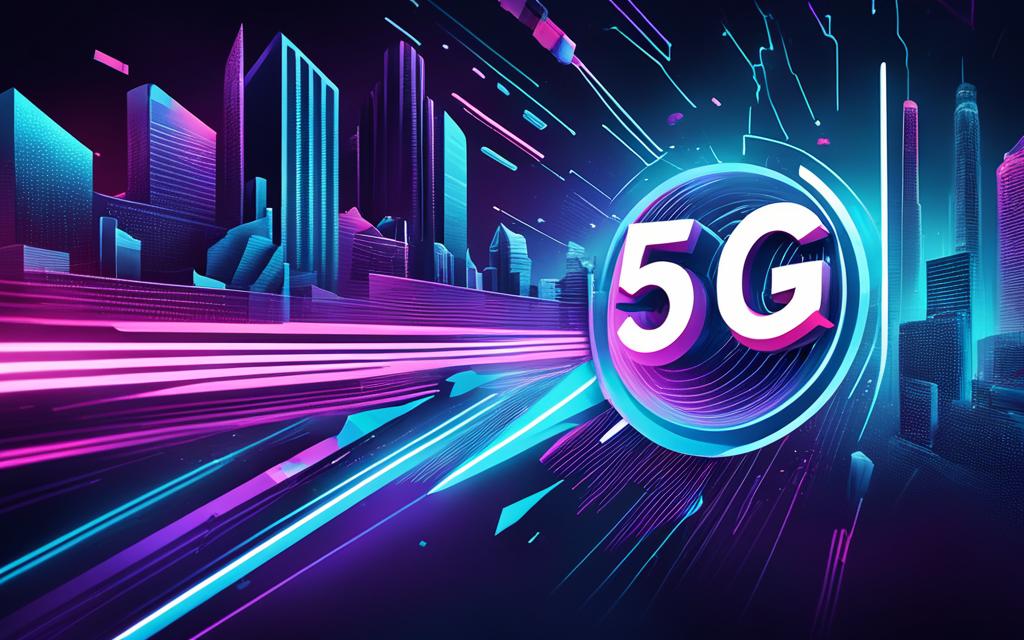
The Impact of Low Latency: Advancements in Real-Time Applications
5G’s low latency has the power to revolutionize a multitude of real-time applications, providing transformative benefits to numerous sectors:
- Online Gaming: Players can engage in multiplayer games without any lag, allowing for truly immersive experiences.
- Virtual Reality (VR): With low latency, users can fully immerse themselves in virtual environments, making VR experiences more compelling.
- Remote Surgery: Surgeons can perform complex operations from remote locations, relying on real-time feedback for precise control.
- Industrial Automation: Low latency ensures seamless communication between machines, enabling more efficient and synchronized manufacturing processes.
- Autonomous Vehicles: Real-time responsiveness is crucial for safe and efficient navigation of self-driving cars.
The combination of 5G’s low latency and real-time communication capabilities empowers industries to push the boundaries of innovation, opening doors to unimaginable possibilities.
Massive Connectivity: The Internet of Things (IoT) Revolution
The advent of 5G technology brings with it the promise of massive connectivity, enabling the Internet of Things (IoT) to flourish like never before. With its ability to handle a vast number of simultaneous connections, 5G paves the way for a more interconnected world, where devices seamlessly communicate and collaborate to enhance our daily lives.
The IoT ecosystem encompasses a wide range of devices, from smart appliances and wearables to industrial sensors and autonomous vehicles. These interconnected devices rely on robust and reliable connectivity to function effectively. 5G networks provide the necessary infrastructure to support the exponential growth of the IoT, offering enhanced capacity, reliability, and responsiveness.
Imagine living in a smart city where traffic signals, streetlights, and public transportation systems communicate seamlessly, optimizing traffic flow and energy usage. With 5G connectivity, this vision becomes a reality, allowing cities to become more efficient, sustainable, and livable.
Autonomous vehicles are another example of how 5G connectivity transforms industries. With the ability to process massive amounts of data in near-real-time, 5G enables vehicles to communicate with each other and the surrounding infrastructure, enhancing safety and efficiency on the roads.
Industrial automation is yet another domain where 5G’s massive connectivity makes a significant impact. Manufacturing facilities equipped with IoT sensors and devices can be interconnected through 5G networks, enabling real-time data capture and analysis. This drives efficiency, productivity, and predictive maintenance, ultimately leading to cost savings and improved output.
But the potential of 5G connectivity extends beyond smart cities, autonomous vehicles, and industrial automation. Its influence permeates numerous sectors, from healthcare and agriculture to retail and entertainment. As more devices become connected, our world becomes increasingly interconnected, paving the way for innovative applications and transformative experiences.
“5G’s massive connectivity has the potential to revolutionize industries and reshape the way we live, work, and interact with our surroundings. The possibilities are truly endless.”
5G Connectivity and the Internet of Things (IoT): A Match Made in Tech Heaven
To fully comprehend the significance of 5G connectivity and the IoT revolution, it is crucial to understand how these two technologies complement each other.
As mentioned earlier, the IoT relies on seamless, reliable connectivity to enable devices to communicate with each other and exchange data. With the capacity to handle a massive number of simultaneous connections, 5G networks create the backbone for the IoT, unlocking its full potential.
Table: Applications of 5G Connectivity in the Internet of Things (IoT)
| Industry | Application |
|---|---|
| Healthcare | Remote patient monitoring, telemedicine, precision medicine |
| Agriculture | Smart farming, precision agriculture, crop monitoring |
| Retail | Smart shelves, inventory management, personalized customer experiences |
| Entertainment | Immersive AR/VR experiences, personalized content delivery |
By harnessing the power of 5G connectivity, the IoT revolutionizes industries, enabling unprecedented levels of automation, efficiency, and innovation. A world of interconnected devices opens up new realms of possibility and transforms the way we live, work, and interact with technology.
As we move forward into the era of 5G connectivity and the IoT revolution, it is crucial to navigate the challenges and considerations that come with these transformative technologies. From infrastructure deployment to security concerns, careful planning and collaboration will pave the way for a future where connectivity serves as the catalyst for technological evolution.
Transformative Applications: Unlocking Innovation
The enhanced capabilities of 5G open doors to transformative applications across industries. The sheer speed and low latency of 5G networks enable revolutionary advancements in various sectors, fueling innovation and driving progress.
Healthcare: Revolutionizing Remote Patient Care and Telemedicine
5G technology has the potential to revolutionize healthcare by enabling remote patient care and telemedicine. With the high-speed and reliable connections provided by 5G networks, doctors can remotely monitor patients, conduct virtual consultations, and perform remote surgeries with reduced latency and increased precision.
Autonomous Vehicles: Faster Decision-Making and Safer Navigation
Autonomous vehicles rely on real-time data and lightning-fast decision-making to ensure safe navigation. With the ultra-low latency of 5G networks, autonomous vehicles can communicate seamlessly with their surroundings, making split-second decisions based on real-time information. This improves overall safety on the road and accelerates the development and deployment of self-driving cars.
Smart Cities: Enhancing Urban Living Through Efficient Management Systems
5G networks play a vital role in the development of smart cities. The high connectivity and data capacity provided by 5G enable efficient management and monitoring systems for various urban infrastructures. From traffic management to energy distribution, 5G-powered smart cities optimize resource allocation, reduce environmental impact, and enhance the overall quality of life for residents.
Manufacturing: Powering Advanced Automation and Predictive Maintenance
In the manufacturing industry, 5G plays a critical role in powering advanced automation and predictive maintenance. With the high-speed and low latency of 5G networks, factories can implement real-time monitoring and control systems, enabling seamless coordination between machines and ensuring efficient production processes. Additionally, 5G facilitates predictive maintenance, reducing equipment downtime and optimizing operational efficiency.
Enhanced Mobile Experiences: Augmented Reality and Virtual Reality
5G networks enhance mobile experiences by making augmented reality (AR) and virtual reality (VR) more compelling. With the high data rates and low latency of 5G, users can enjoy immersive AR and VR applications with seamless streaming, interactive experiences, and reduced motion sickness.
| Industry | Transformative Applications |
|---|---|
| Healthcare | Remote patient care, telemedicine, remote surgeries |
| Autonomous Vehicles | Faster decision-making, safer navigation |
| Smart Cities | Efficient management systems, optimized resource allocation |
| Manufacturing | Advanced automation, predictive maintenance |
| Mobile Experiences | Enhanced augmented reality, virtual reality |

These are just a few examples of how 5G applications are revolutionizing industries and unlocking innovation. As 5G continues to evolve and expand, we can expect even more transformative solutions to emerge, contributing to advancements across the board.
Challenges and Considerations: Navigating the 5G Landscape
While the promises of 5G are vast, its deployment comes with several challenges that need to be addressed. These challenges encompass various aspects, including infrastructure requirements, regulatory hurdles, and security considerations.
Infrastructure Requirements and Environmental Concerns
One of the key challenges in deploying 5G networks is the need for a significant infrastructure upgrade. The installation of small cells, which are essential for 5G connectivity, can raise concerns about health and environmental impacts. Ensuring that the installation process adheres to strict guidelines and regulations is crucial to mitigate these concerns and maintain public trust.
Regulatory and Spectrum Allocation Challenges
Another challenge faced by stakeholders in the 5G landscape is navigating the complex regulatory environment. Spectrum allocation, in particular, poses a significant challenge as it determines the availability of frequencies for 5G networks. Governments and regulatory bodies need to develop policies and frameworks that facilitate spectrum allocation and enable efficient use of limited resources.
Security Considerations in a Connected World
As the number of connected devices increases with the advent of 5G, ensuring robust security measures becomes paramount. The interconnected nature of 5G networks brings forth new vulnerabilities and potential cyber threats. Stakeholders must prioritize cybersecurity strategies and adopt advanced technologies to protect against data breaches, unauthorized access, and other malicious activities.
By addressing these challenges and considerations, the deployment of 5G networks can proceed smoothly, ensuring the realization of its transformative potential in a secure and sustainable manner.
Conclusion
5G networks are poised to revolutionize the way we connect and communicate. With its unprecedented speed, reliability, and transformative capabilities, 5G technology goes beyond traditional connectivity, offering vast opportunities for innovation and advancement in various industries.
The impact of 5G extends far beyond faster downloads and streaming. Healthcare will be revolutionized with remote patient care and telemedicine. Transportation will see safer navigation and faster decision-making for autonomous vehicles. Manufacturing will benefit from advanced automation and predictive maintenance. And smart cities will become more efficient with enhanced management and monitoring systems.
As 5G continues to roll out globally, the possibilities for technological evolution are boundless. This new era of connectivity will catalyze innovation in unprecedented ways, creating a future where our devices, industries, and cities are seamlessly interconnected, transforming the way we live, work, and interact.
FAQ
What is 5G technology?
5G technology is the next generation of mobile network technology that offers unprecedented speed, reliability, and transformative capabilities compared to its predecessors.
How does 5G differ from 4G LTE networks?
5G builds upon the foundation of 4G LTE networks and delivers faster data speeds, lower latency, and the ability to connect a vast number of devices simultaneously.
What are the key features of 5G technology?
The key features of 5G technology include enhanced mobile broadband (eMBB), ultra-reliable low-latency communications (URLLC), and massive machine-type communications (mMTC).
How fast is 5G?
5G offers remarkable data speeds with theoretical peak rates exceeding 10 gigabits per second (Gbps), which is up to 100 times faster than 4G.
What is latency, and why is it important in 5G?
Latency refers to the time it takes for data to travel from one point to another. 5G aims to achieve ultra-low latency, enabling near-instantaneous communication, which is crucial for applications that require real-time responsiveness.
How does 5G enable the Internet of Things (IoT)?
5G is designed to support the exponential growth of connected devices in the IoT ecosystem. It has the capacity to handle a massive number of simultaneous connections, enabling a more interconnected world where devices seamlessly communicate.
What are some transformative applications of 5G?
5G opens doors to transformative applications across industries. In healthcare, it revolutionizes remote patient care and telemedicine. For autonomous vehicles, it enables faster decision-making and safer navigation. In smart cities, it enhances urban living through efficient management and monitoring systems. In manufacturing, it powers advanced automation and predictive maintenance, among other applications.
What are the challenges and considerations with 5G deployment?
Deployment of 5G comes with challenges such as infrastructure requirements, potential health and environmental impacts, regulatory and spectrum allocation challenges, and the need for robust security measures against cyber threats.
How will 5G impact various industries?
5G is a transformative force that will impact industries such as healthcare, transportation, manufacturing, and more, revolutionizing processes and unlocking new possibilities for innovation and advancement.
What is the future of 5G technology?
As 5G continues to roll out globally, the possibilities for innovation and advancement are boundless, ushering in a new era where connectivity catalyzes technological evolution.














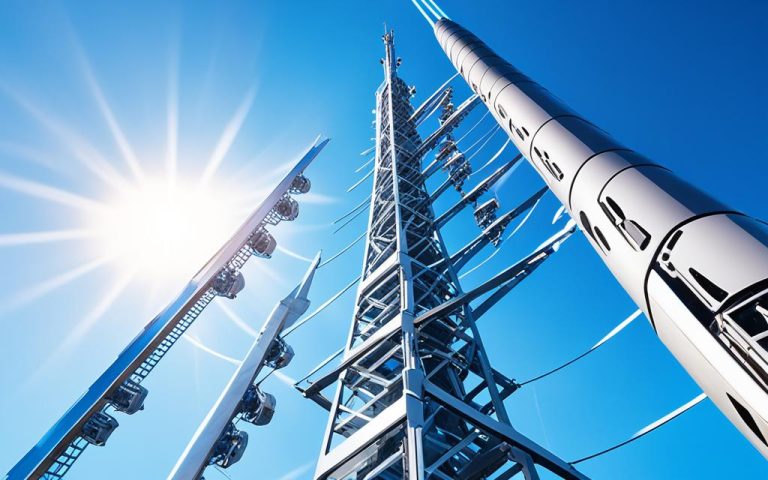
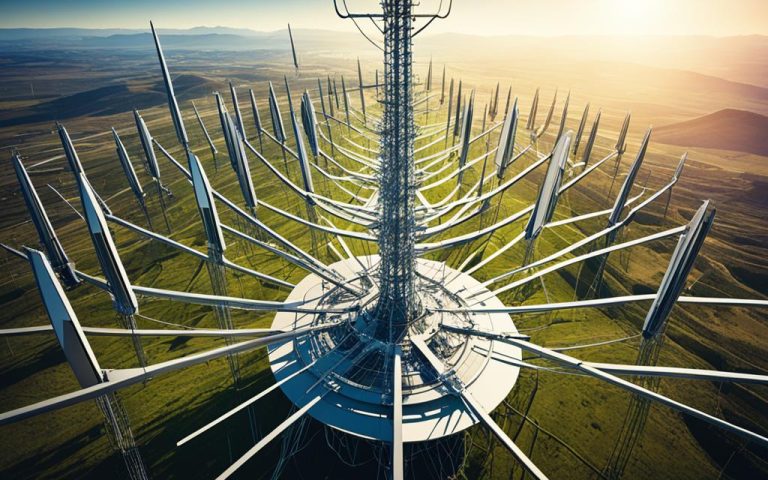
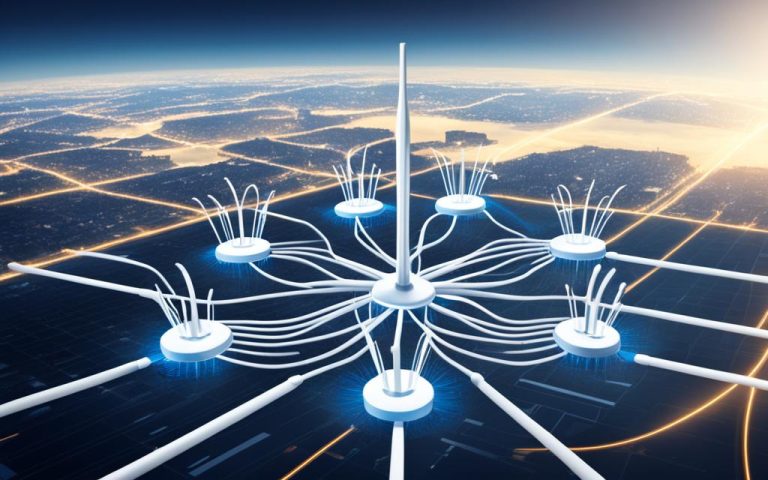

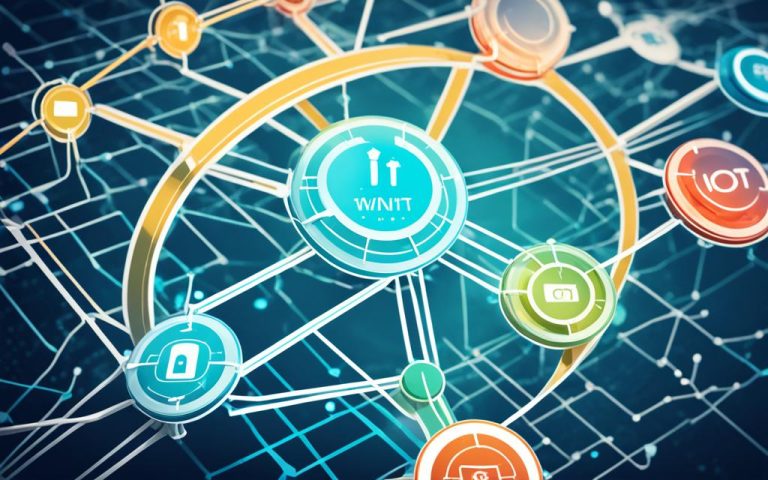
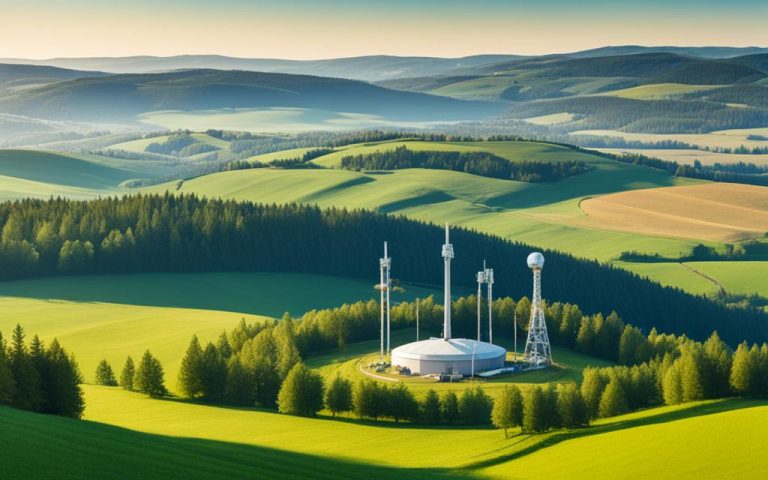
4 Comments